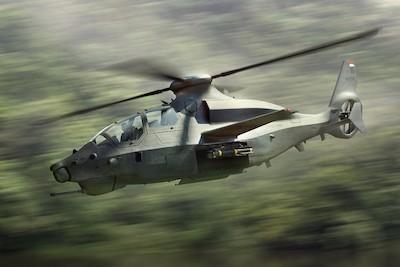Sun, Feb 11, 2024
Ukraine War Shows Little Room for Delicate Manned Aircraft in Close-Range ISR Roles
The US Army has announced the elimination of Future Attack Reconnaissance Aircraft, putting to rest a light scout helicopter that was hoped to replace Bell's OH-58 Kiowa.

The OH-6 has officially outlasted just about every one of its challengers, despite decades of prospective replacement from 'big Army'. The Kiowa entered service as a light, agile, single-engine helo in Army service, a sibling to the Bell JetRanger 206A. Successive enhancements to the type kept the Kiowa in service through most of GWOT, only being retired from service entirely after years of mothballing and selective retirement for older, more tired airframes. In its place, the Army had accepted the use of the much larger, heavier, and pricier AH-64 Apache for its direct fire missions, and the use of uncrewed aircraft for scouting purposes. The Future Attack Recon Aircraft program kickstarted development on the Bell 360 Invictus and Sikorsky Raider X. The Future Long Range Assault Aircraft program continues, ensuring that the tiltrotor V-280 Valor lives to see another day.
While much of the cancellation was based on the funding required to keep up expensive, shiny new equipment for the future procurement pipeline, there's a sort of hard-bit understanding around Army water coolers: UAVs are the future, particularly in ISR roles. The war in Ukraine has taught planners that a light, agile little helicopter is still far too slow a target when it's forced to haul a few personnel inside, so the best way to save money and lives is to put the drones in the light helo's place.
Army Chief of Staff Randy George said that the service will conclude prototyping on the program at the end of fiscal year 2024, allowing manufacturers to learn as much as possible from what they've completed already. "Aerial reconnaissance has fundamentally changed,” said George. “Sensors and weapons mounted on a variety of unmanned systems and in space are more ubiquitous, further reaching, and more inexpensive than ever before."
More News
Its Offerings Are Lighter, Cleaner, and Now Pushing Past 1,000nm on SAF Jet Fuel DeltaHawk’s diesel-powered aircraft lineup has seen incredible upgrades over the last few yea>[...]
The Airplane Experienced A Total Loss Of Engine Power On December 3, 2025, about 1600 central standard time, a Mooney Aircraft Corp. M20K, N57229, was substantially damaged when it>[...]
Make Sure You NEVER Miss A New Story From Aero-News Network Do you ever feel like you never see posts from a certain person or page on Facebook or Instagram? Here’s how you c>[...]
Aero Linx: European Society of Aerospace Medicine (ESAM) As a pan-European, independent forum, it works to promote the safety and health of all persons involved in aviation and spa>[...]
“We are excited to see Wisk achieve this milestone, and I’m so proud of the team that made it possible. The team at Wisk has built advanced technologies across flight c>[...]
 Aero-TV: DeltaHawks Diesel Power Steps Into the Spotlight
Aero-TV: DeltaHawks Diesel Power Steps Into the Spotlight NTSB Prelim: Mooney Aircraft Corp. M20K
NTSB Prelim: Mooney Aircraft Corp. M20K ANN FAQ: Turn On Post Notifications
ANN FAQ: Turn On Post Notifications ANN's Daily Aero-Linx (12.20.25)
ANN's Daily Aero-Linx (12.20.25) Aero-News: Quote of the Day (12.20.25)
Aero-News: Quote of the Day (12.20.25)



